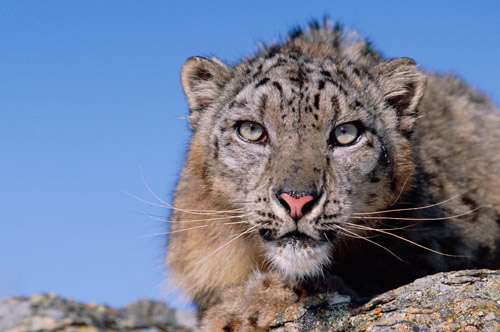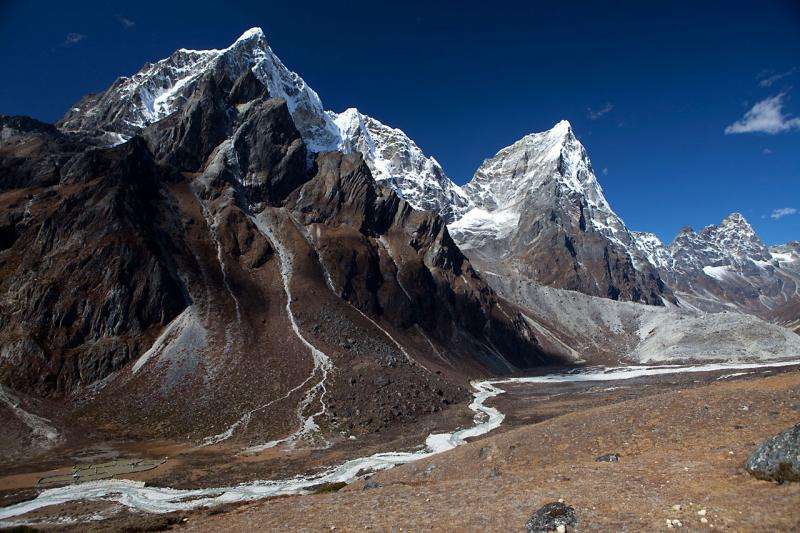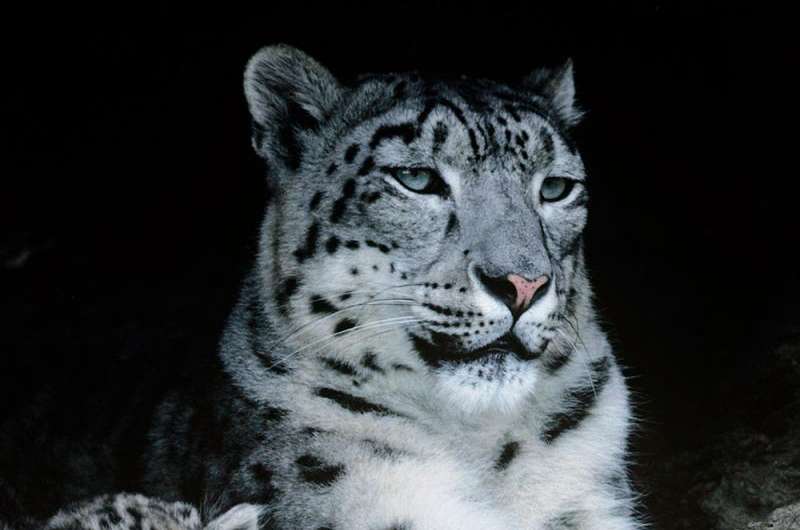Climate change could push snow leopards over the edge

Urgent international action must be taken in the face of climate change to save the snow leopard and conserve its fragile mountain habitats that provide water to hundreds of millions of people across Asia, according to a new WWF report.
Launched on International Snow Leopard Day, Fragile Connections: Snow leopards, people, water and the global climate, reveals that more than a third of snow leopard habitat could be rendered unsuitable for the endangered big cats if climate change is not checked.
Warmer temperatures could see the tree line shifting up the mountains and farmers planting crops and grazing livestock at higher altitudes, squeezing the remaining snow leopards into smaller pockets.
It is not just snow leopards that are at risk since their high-altitude habitat spans many of Asia's major watersheds.
The WWF report highlights that over 330 million people live within 10km of rivers originating in snow leopard territory and directly depend on them for their daily water supplies. Climate change could drastically alter the flow of water down from the mountains, threatening the livelihoods of vast numbers of people across the continent.
"Urgent action is needed to curb climate change and prevent further degradation of snow leopard habitat, otherwise the 'ghost of the mountains' could vanish, along with critical water supplies for hundreds of millions of people," said Rishi Kumar Sharma, WWF Global Snow Leopard Leader, who is coordinating WWF's first ever global strategy to conserve the iconic species.

There could be as few as 4,000 snow leopards left in Central Asia's high mountains – and their numbers are continuing to fall. Increased habitat loss and degradation, poaching and conflict with communities have contributed to a 20 per cent decline in the population in the past 16 years and left the species hanging on in many places.
Unchecked, climate change will exacerbate these threats and could push the species over the edge.
Building on WWF's long history in snow leopard conservation, the organization's new strategy will focus on areas where WWF believes it can add most value to global efforts to conserve the species and protect people's livelihoods, including mitigating the threat from climate change, reducing conflict with communities, and tackling poaching and trafficking of snow leopard products.
"Climate change is a major risk, but we also need to concentrate on other factors. Snow leopards won't survive for long unless we tackle climate change alongside other threats such as poaching, retaliatory killings by herders, declining prey species and poorly planned development," said Sami Tornikoski, Leader WWF Living Himalayas Initiative.
"India, Nepal and Bhutan have proven that it's possible to increase the number of iconic species like tigers and rhinos. Together governments, conservationists and communities can achieve similar successes with snow leopards and drag them back from the brink," added Tornikoski.
As part of its snow leopard strategy, WWF will continue to fund vital research, including the use of camera traps and satellite collaring, to collect more data on the elusive big cat.

This approach assumes greater prominence after the Fragile Connections report revealed that less than 14 per cent of snow leopard habitat has ever been covered by either research or conservation activities.
"There are gaping holes in our knowledge of snow leopards – from their populations to their mating and feeding behaviour – and their habitats. These gaps must be filled so that we have the data to develop more effective conservation strategies," said Sharma.
But time is running out. In 2013, the twelve snow leopard range states signed up to the ambitious Global Snow Leopard and Ecosystem Protection Program in Bishkek. The landmark agreement signalled an unprecedented level of commitment to conserve the snow leopard as well as a new era of collaboration between governments, international organizations and civil society groups.
However, snow leopard numbers have continued to dwindle.
"Reversing the downward trend in snow leopard numbers and conserving their fragile habitat require conservation efforts on an unparalleled scale," said Sharma. "It will be difficult to achieve but the momentum and political will exists: governments must now translate this into action by swiftly scaling up their efforts to save the ghost of the mountains.
More information: d2ouvy59p0dg6k.cloudfront.net/ … ections_report_1.pdf
d2ouvy59p0dg6k.cloudfront.net/ … rt__october_2015.pdf
Provided by WWF
















